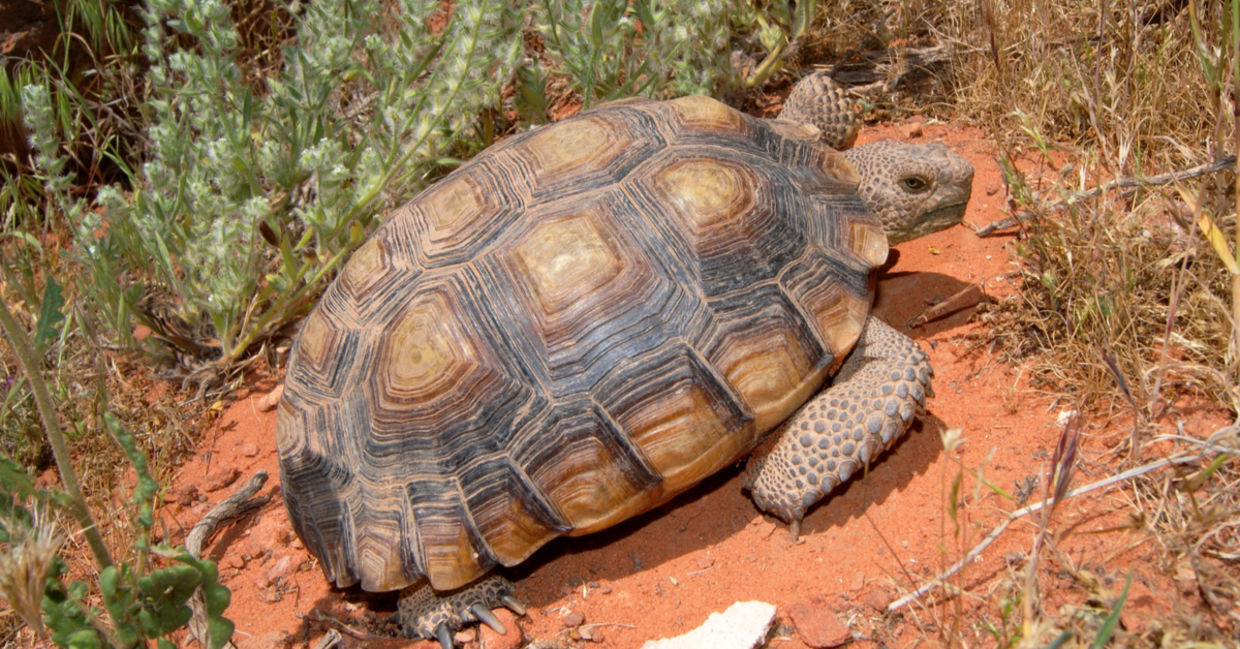
(Matt Jeppson / Shutterstock.com)
The Nevada deserts are an ideal place for solar farms. There is plenty of open land for large solar arrays and large cities like Las Vegas, Reno, and Boulder City that need electrical power. Now, the US government just announced plans in January 2020 to build a massive solar farm with energy storage in the desert outside Las Vegas on federal lands according to Bloomberg Environment.
This is good news for the people who live in the area and it is also good news for the desert tortoises who also inhabit the Nevada deserts. Solar farms in Nevada actually provide a better habitat for the reptiles due to improved growth of the plants they need to survive according to PV Magazine USA.
A recent study by the University of Arizona showed that agriculture thrives in solar fields so it follows that wild plants do too.
Creosote plants that provide cover and protection for the young tortoises are growing extremely well in the solar field according to a research project led by Dale Devitt, a soil and water scientist at the University of Nevada, Las Vegas. Flora studies were conducted after planting and watering 90 seedlings of cover plants on the solar site.
“It appears the solar facility is altering the microclimate and surface hydrology in ways that are currently extremely beneficial to both creosote and bursage, compared to the unaltered habitat that surrounds the facility,” Devitt said in a Valley Electric Association annual report on habitat conservation.
Now, desert tortoises are freely roaming a 15 MW community solar farm owned by the Valley Electric Association due to openings in the fence that were made by Bombard Renewable Energy. The tortoise-sized fence openings are 10 inches (25.4 centimeters) wide by 7 inches (17.7 Centimeters) and spaced around every 260 feet (79.2 meters) according to Jennifer Wilkening, a US Fish and Wildlife Service biologist who oversees the project’s habitat protection plan.
Even the placement of the solar panels in the field were placed with the reptiles in mind, said Wilkening. The fixed-tilt PV panels were placed 18 inches higher off the ground than the industry standard to allow more vegetation to grow. Other measures were also taken to protect the tortoises and their habitat.
“Although it is still early in the study, the preliminary results demonstrate that conditions inside the solar facility are less stressful on the plants, with both creosote and bursage staying active year-round. We believe the results demonstrate that a paradigm shift is needed in terms of how solar facilities are installed. Installations should be designed not only from an engineering perspective but a biological perspective as well,” DeVitt told PV Magazine.
This is not the only location where solar companies are helping to protect the wildlife on or around their field locations. First Solar used special fencing at its 550 MW Topaz project in California to protect endangered San Joaquin kit foxes. The fences allow access to the foxes but keep out predators like coyotes.
Other solar fields plant wildflowers and have become havens for birds and bees. In the UK, the Royal Society for the Protection of Birds and the alternative energy firm Anesco have teamed up to create or restore natural habitats in solar fields according to Take Part.
These initiatives are good for the planet for the renewable clean energy they create and for the conservation of endangered wildlife. This is land use at its best and should be implemented by energy companies worldwide.
YOU MIGHT ALSO LIKE:
Growing Crops Under Solar Panels Makes Both Thrive
The Navajo Nation's First Solar Project is Scaling Up
An Extinct Rare Giant Tortoise was Found on the Galápagos Islands







